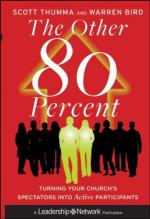[Footnote 2: The subject of Mr. Froth’s profound comment is now the memorable March of Charles XII of Sweden to the Ukraine, ending on the 8th of July, 1709, in the decisive battle of Pultowa, that established the fortune of Czar Peter the Great, and put an end to the preponderance of Sweden in northern Europe. Charles had seemed to be on his way to Moscow, when he turned south and marched through desolation to the Ukraine, whither he was tempted by Ivan Mazeppa, a Hetman of the Cossacks, who, though 80 years old, was ambitious of independence to be won for him by the prowess of Charles XII. Instead of 30,000 men Mazeppa brought to the King of Sweden only himself as a fugitive with 40 or 50 attendants; but in the spring of 1809 he procured for the wayworn and part shoeless army of Charles the alliance of the Saporogue Cossacks. Although doubled by these and by Wallachians, the army was in all but 20,000 strong with which he then determined to besiege Pullowa; and there, after two months’ siege, he ventured to give battle to a relieving army of 60,000 Russians. Of his 20,000 men, 9000 were left on that battle-field, and 3000 made prisoners. Of the rest—all that survived of 54,000 Swedes with whom he had quitted Saxony to cross the steppes of Russia, and of 16,000 sent to him as reinforcement afterwards—part perished, and they who were left surrendered on capitulation, Charles himself having taken refuge at Bender in Bessarabia with the Turks, Mr. Froth’s Infidels.]
[Footnote 3: Perhaps Monsieur Palmquist is the form in which these ‘Grave, Serious, Designing Men in their Way’ have picked up the name of Charles’s brave general, Count Poniatowski, to whom he owed his escape after the battle of Pultowa, and who won over Turkey to support his failing fortunes. The Turks, his subsequent friends, are the ‘Infidels’ before-mentioned, the wise politicians being apparently under the impression that they had marched with the Swedes out of Saxony.]
[Footnote 4: Here Mr. Froth and his friends were truer prophets than anyone knew when this number of the Spectator appeared, on the 19th of April. The news had not reached England of the death of the Emperor Joseph I on the 17th of April. During his reign, and throughout the war, the Hungarians, desiring independence, had been fighting on the side of France. The Archduke Charles, now become Emperor, was ready to give the Hungarians such privileges, especially in matters of religion, as restored their friendship.]
[Footnote 5: After Pultowa, Frederick IV of Denmark, Augustus II of Poland, and Czar Peter, formed an alliance against Sweden; and in the course of 1710 the Emperor of Germany, Great Britain, and the States-General concluded two treaties guaranteeing the neutrality of all the States of the Empire. This suggests to Mr. Froth and his friends the idea that there is a ‘Neutrality Army’ operating somewhere.]




